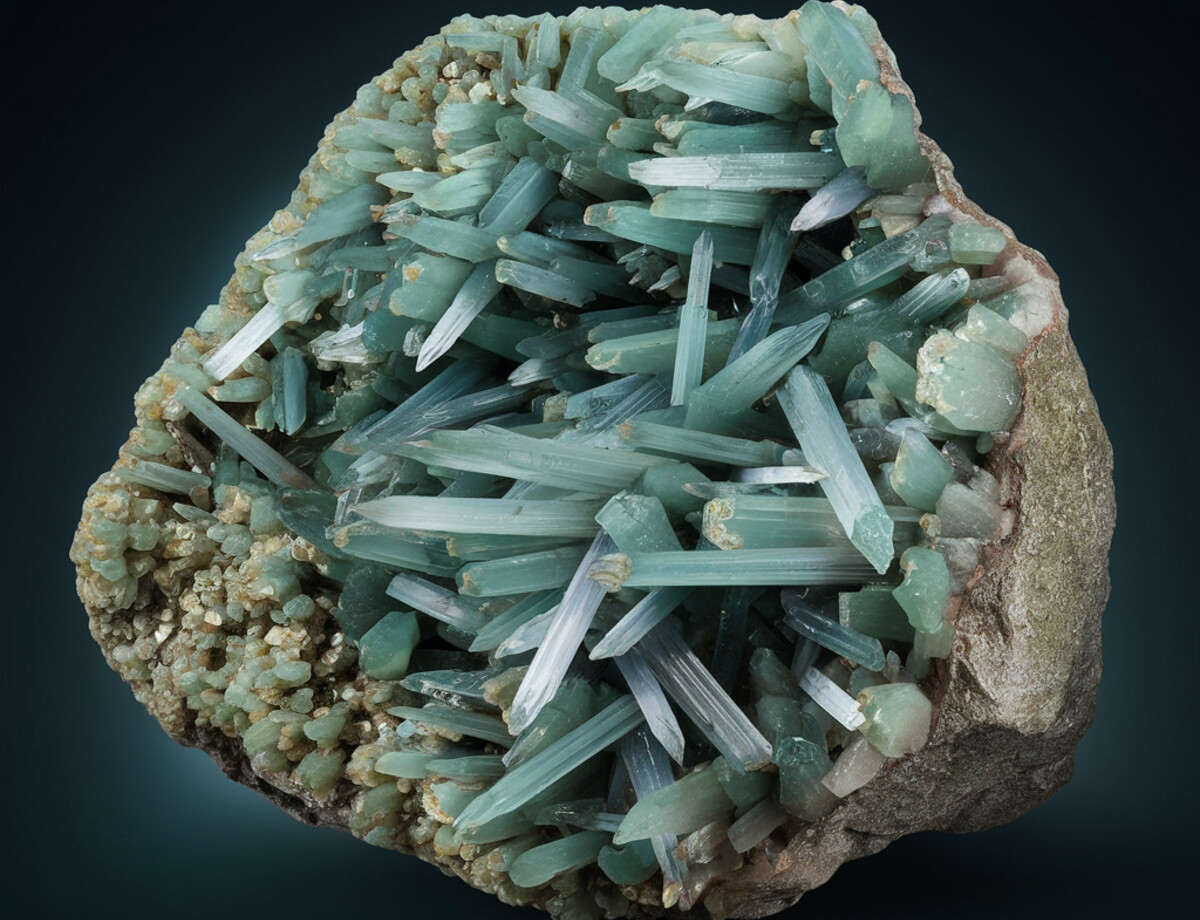
Bílinite is a fascinating mineral that often goes unnoticed. Found in oxidized zones of sulfide deposits, it boasts a unique chemical composition and striking appearance. But what exactly makes bílinite so special? Bílinite is a hydrated iron sulfate mineral, typically yellow to brownish-yellow, and forms in environments rich in sulfuric acid. Its name comes from the town of Bílina in the Czech Republic, where it was first discovered. This mineral is not just a pretty face; it plays a significant role in understanding geological processes and environmental conditions. Ready to learn more? Here are 30 intriguing facts about bílinite that will leave you amazed!
Key Takeaways:
- Bílinite is a unique mineral found in the Czech Republic, known for its yellowish-brown color and formation in oxidized zones. It has a chemical formula of Fe2+Al2(SO4)4·22H2O and is important for studying environmental conditions in mining areas.
- Bílinite, a hydrated sulfate mineral, has a vitreous to silky luster and forms in coal mines and acid mine drainage sites. It is valuable for geologists and mineralogists in understanding geochemical processes and environmental mineralogy.
What is Bílinite?
Bílinite is a fascinating mineral with a unique composition and history. It is part of the sulfate minerals group and has some intriguing properties.
- Bílinite is a sulfate mineral composed of iron, aluminum, and sulfate.
- It was first discovered in the Bílina region of the Czech Republic, which is how it got its name.
- The mineral typically forms in oxidized zones of sulfide ore deposits.
- Bílinite has a yellowish to brownish color, making it easily recognizable.
- It is often found in fine-grained aggregates or crusts.
Chemical Composition of Bílinite
Understanding the chemical makeup of bílinite helps in identifying and studying this mineral.
- The chemical formula for bílinite is Fe2+Al2(SO4)4·22H2O.
- It contains water molecules in its structure, making it a hydrated sulfate mineral.
- The presence of iron gives bílinite its distinct color.
- Aluminum in bílinite contributes to its stability and formation.
- The sulfate ions in bílinite are responsible for its crystalline structure.
Formation and Occurrence
Bílinite forms under specific conditions and can be found in various locations around the world.
- It forms in oxidized environments where sulfide minerals are present.
- Bílinite is often associated with other sulfate minerals like copiapite and halotrichite.
- It can be found in coal mines, especially in areas with high sulfur content.
- The mineral is also present in acid mine drainage sites.
- Bílinite has been discovered in countries like Germany, Italy, and the United States.
Physical Properties
The physical characteristics of bílinite make it unique and distinguishable from other minerals.
- Bílinite has a hardness of about 2 on the Mohs scale, making it relatively soft.
- It has a vitreous to silky luster, giving it a shiny appearance.
- The mineral has a specific gravity of approximately 2.1.
- Bílinite is translucent, allowing light to pass through it.
- It has a perfect cleavage in one direction, meaning it breaks easily along specific planes.
Uses and Significance
While bílinite may not be as well-known as other minerals, it has its own importance.
- Bílinite is primarily of interest to mineralogists and geologists for study.
- It helps in understanding the geochemical processes in oxidized zones.
- The mineral can be used as an indicator of environmental conditions in mining areas.
- Bílinite's presence can signal the oxidation state of iron and sulfur in the environment.
- It is also a subject of study in environmental science due to its formation in acid mine drainage.
Interesting Facts
Here are some lesser-known but intriguing facts about bílinite.
- Bílinite can form efflorescent crusts on the surface of rocks.
- The mineral can change color when exposed to air and moisture.
- It is often found in microscopic sizes, requiring detailed analysis to study.
- Bílinite can coexist with other minerals, forming complex mineral assemblages.
- The study of bílinite contributes to the broader understanding of sulfate mineralogy and environmental mineralogy.
Bílinite: A Hidden Gem in Mineralogy
Bílinite, a fascinating mineral, holds a unique place in the world of geology. Found primarily in the Czech Republic, this mineral is known for its striking yellow-green color and complex chemical composition. Its rarity makes it a prized specimen for collectors and researchers alike.
Understanding bílinite's properties and formation can provide valuable insights into the geological processes that shape our planet. Its presence in specific environments also helps scientists trace the history of mineral deposits and the conditions under which they formed.
For those interested in mineralogy, bílinite offers a glimpse into the intricate and often surprising world of minerals. Whether you're a seasoned geologist or a curious enthusiast, exploring bílinite's characteristics and origins can deepen your appreciation for the natural wonders hidden beneath our feet.
Frequently Asked Questions
Was this page helpful?
Our commitment to delivering trustworthy and engaging content is at the heart of what we do. Each fact on our site is contributed by real users like you, bringing a wealth of diverse insights and information. To ensure the highest standards of accuracy and reliability, our dedicated editors meticulously review each submission. This process guarantees that the facts we share are not only fascinating but also credible. Trust in our commitment to quality and authenticity as you explore and learn with us.


